Artwork of Queenie Chan
Featured artist Queenie is showcasing some of her sequential work from Small Chen (written by Kylie Chen). The story telling is amazing and it has a fantastic flow.
Page 15 – Inks
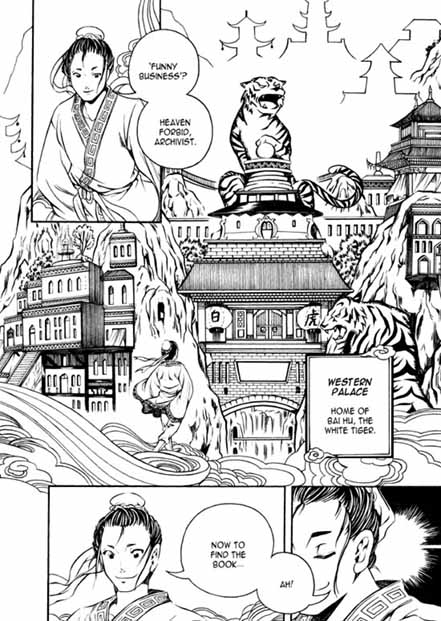
Page 16 – Inks
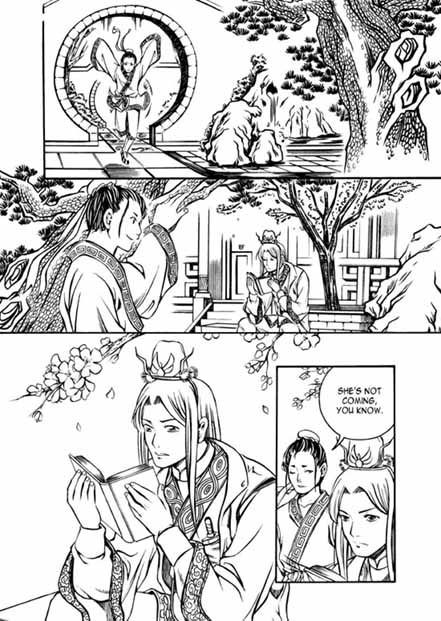
Page 17 – Inks
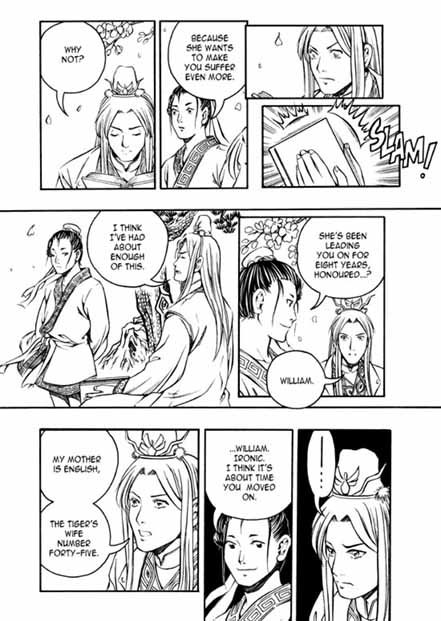
The same 3 pages with the tones completed. The tones add a real depth of the artwork and provides the “cloud” effect and softens a lot of the shadows.
Page 15 – Tones
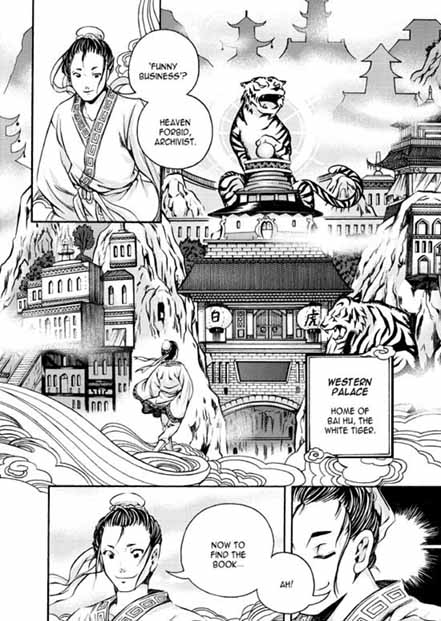
Page 16 – Tones
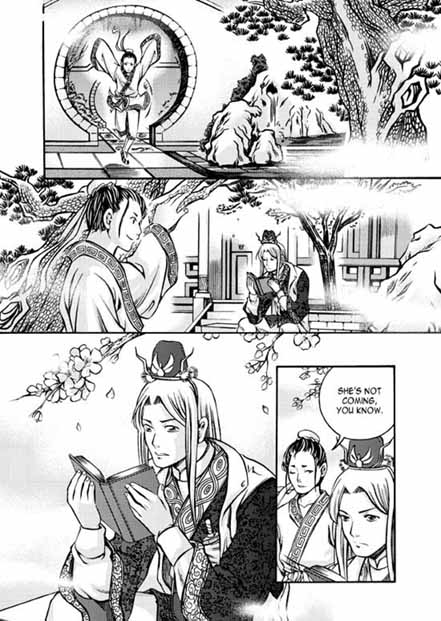
Page 17 – Tones
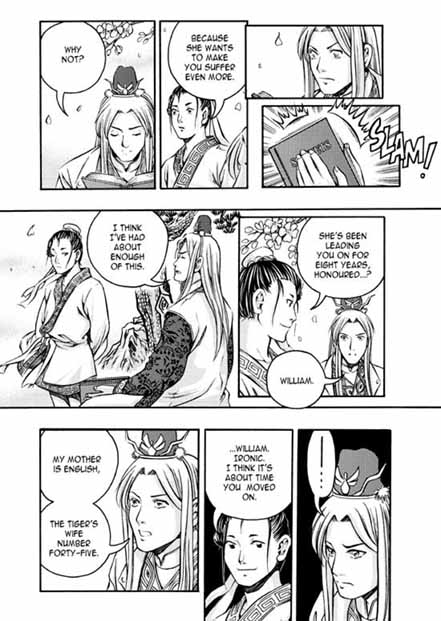
Firstly, thanks for your time. Your artwork is incredible. Can you describe your work process?
I can break it down into 3 main parts.
Penciling:
This is possibly the hardest part of the job for most people. What it comes down to is figuring out what you’re drawing, an also where and how. With inking and toning it’s mostly grunt work because the art is already there, but the thing with pencils is that often what you want to draw turns out different on paper. This was a bigger problem in my early days, but not so much now – you get better at it, I guess. Since I also do my own inks, my pencils can be a tad sloppy. I’m not proud of it, but since it’s not finished artwork, it hardly matters.
Inks:
I mostly use dip pens for inking, though sometimes I use fineliners. I use Sakura microns when it’s fineliners, and Zebra G-pens and Nikko pens with IC Comic Super Black ink. If you ask what I prefer, it’s definitely fineliners because they’re easier to use, but the trouble with fineliners is that they fade when you rub over them with a rubber, so when you’re rubbing out the pencil lines, the end result is that the scanner has trouble picking up the black lines. I deal with it best as I can though, and use a mix of the two.
Tones:
I use Photoshop and Deleter Comic Works for toning. Comicworks is an older program and kinda clunky, but I still use it since its adequate and easy. Other times I just export it to Photoshop and use the Deleter tones there. I try not to overtone my pages these days – toning isn’t meant to be so over-the-top. Probably only “The Dreaming” has crowded tones (this is intentional), but everything I’ve done since then I’ve tried to keep it simple. Sometimes, I don’t even tone the pages – preferring to do cross-hatching instead.
Thanks for the explanation. It’s time to ask you to tell me a little about yourself.
I came to Australia in 1986 when I was 6 years old. I have an older married sister and have a 1 year old niece. I’ve always been into manga as a kid from reading comics and watching various TV Series. Love pop culture especially the story telling aspect.
How did you get into manga?
Actually I completed an Information Systems degree at UNSW first but it was a bad time when I graduated with the dot com bust. Kind of realized I didn’t want to get into IT especially hearing that a lot of jobs were getting outsourced.
So drawing manga was a huge career change?
Yes, I saw an internet notice from Tokyopop. I put together a portfolio and sent it in. Tokyopop then asked for a full proposal. It took four pitches before the haunted school story (which became “The Dreaming”) was accepted.
That’s fantastic!
What was it like working on the Dreaming?
I did everything! From pencils to lettering to shading. It took about 9 months to complete 180 pages.
After the Dreaming, what was your next project?
I was introduced to Dean Koontz by Del Rey to work on Odd Thomas. It was a fun learning experience. Have completed 2 books already but the third book, House of Odd (coming out 30-Mar-12) will probably be the last book of this collaboration.
So what will you be working on after?
I’m currently with with Kylie Chen who did White Tiger on a 6 book series. Kylie approached by directly to work on Small Shen will is a prequel to the series.
Also just finished Twisted Tales with Yunyu. It’s a fairytables come to life idea. It was very interesting mixing art and music. For example the first single Dorothy re-imagines her as a lost cosmonaut.
What are you looking forward to in the future?
Definitely collaborating with more people with new ideas! There’s great value working with others. Would also love to do more storyboards and have been combining more prose into my work.
Collaborations are always great.
However do you have your own story to tell?
Yes I do! It’s really hard to describe the story except to say It’s a huge epic Chinese fantasy story! Would love to see it brought to life in an anime or TV series.
Thanks again for your time!
Would really love to see this epic story of yours one day. All the best in your current and future endeavors.
For more of her work check out Queenie’s Website.
Posted: February 6th, 2012 under art, comic, Featured Artist.
Tags: artist, interview, manga, Odd Thomas, Queenie Chan, review, Small Shen, The Dreaming, Tokyopop, Writer

[…] Chapter 3 pencils. If you’re looking for some art updates from this last post I did, I did an interview on sigmatestudio.com where I showed some finished art samples from Chapter 1. Thanks to Stephen for the […]
Queenie,
Thanks for your time to do the interview!
SIGMATE
[…] Comments SIGMATE on Artwork of Queenie ChanBlue and White Totoro – Free Crochet Pattern | Queenie Chan on Artwork of Queenie ChanErnest […]
[…] life” getting in the way a little. Still managed to complete an interview with Australian Queenie Chan. (Her work is absolutely […]